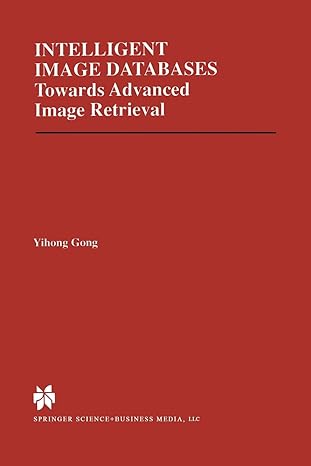Question
******************** IN C++ *********************** Problems in Computer Science are often classified as belonging to a certain class of problems (e.g., NP, Unsolvable, Recursive). In this
******************** IN C++ ***********************
Problems in Computer Science are often classified as belonging to a certain class of problems (e.g., NP, Unsolvable, Recursive). In this problem you will be analyzing a property of an algorithm whose classification is not known for all possible inputs.
Consider the following algorithm:
input n print n if n = 1 then STOP if n is odd then n 3n + 1 else n n/2 GOTO 2
Given the input 22, the following sequence of numbers will be printed:
22 11 34 17 52 26 13 40 20 10 5 16 8 4 2 1
It is conjectured that the algorithm above will terminate (when a 1 is printed) for any integral input value. Despite the simplicity of the algorithm, it is unknown whether this conjecture is true. It has been verified, however, for all integers n such that 0 < n < 1,000,000 (and, in fact, for many more numbers than this.)
Given an input n, it is possible to determine the number of numbers printed before and including the 1 is printed. For a given n this is called the cycle-length of n. In the example above, the cycle length of 22 is 16.
For any two numbers i and j you are to determine the maximum cycle length over all numbers between and including both i and j. This means you have to determine the cycle length for each number and then pick the maximum .
Input
The input will consist of a series of pairs of integers i and j, one pair of integers per line. All integers will be less than 10,000 and greater than 0.
You should process all pairs of integers and for each pair determine the maximum cycle length over all integers between and including i and j.
You can assume that no operation overflows a 32-bit integer.
Output
For each pair of input integers i and j you should output i, j, and the maximum cycle length for integers between and including i and j.
These three numbers should be separated by at least one space with all three numbers on one line and with one line of output for each line of input.
The integers i and j must appear in the output in the same order in which they appeared in the input and should be followed by the maximum cycle length (on the same line).
Sample Input:
100 200
201 210
90 100
1 10
Sample Output:
100 200 125
201 210 89
900 1000 174
1 10 20
Provided Code (MUST BE USED):
#include
int cycle(int m){ auto elements = 1; // elements is the number of elements in the sequence starting at m // end ending when m == 0 while ( m != 1){ //********************************* // your code here //********************************* } return elements; }
int ThreeN(int m, int n) { // this code should call cycle //********************************* //your code here //*********************************** return max; }
int main() { auto m=0,n=0,max=0,temp=0; auto mOriginal=0,nOriginal=0; auto i=0;
std::cin>>m; std::cin>>n;
/* remember original order of entries for output */ mOriginal = m; nOriginal = n; auto temp = 0;
if(m>n){ temp = m; m = n; n = temp; max = ThreeN(m,n); printf("%d %d %d ",mOriginal,nOriginal,max); return 0; }
Step by Step Solution
There are 3 Steps involved in it
Step: 1

Get Instant Access to Expert-Tailored Solutions
See step-by-step solutions with expert insights and AI powered tools for academic success
Step: 2

Step: 3

Ace Your Homework with AI
Get the answers you need in no time with our AI-driven, step-by-step assistance
Get Started


